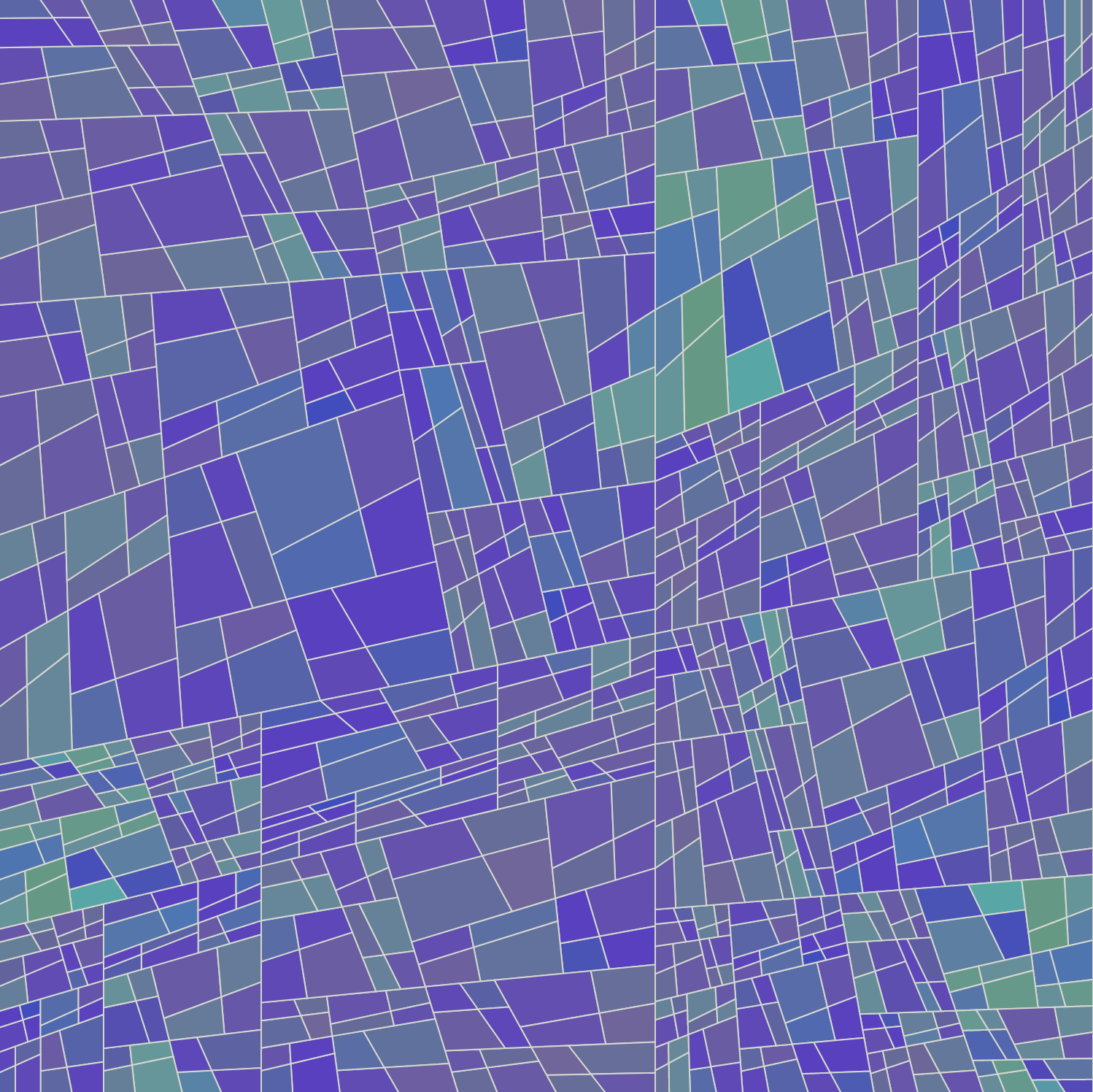Quad is a generative art experiment based on the idea of subdividing quadrilaterals. It is written in Elm.
Some years ago I had "composed" some generative art, both static and dynamic, using Processing. I decided to try my hand at generative art again using Elm, inspired by Xavier Ho's talk at Elm Europe 2018. First step: search the web. Among the links I followed was one on Xavier's home page, Generated space, in particular Organic grid, which I admired. Looking at Organic Grid, I could see what the main principles were: (a) start with a square of a certain color, add a random node on each side, then connect nodes on opposite sides to divide the square into four quadrilaterals; repeat this process a certain number of times on each of the subquadrilaterals; (b) as each parent quadrilateral is subdivided, randomly modify the colors of the parent to produce the colors of the children.
Most of the work on this project was in writing module Quad, and the first step was to make the central type definition:
type Quad = Quad Vertices Color
where
type alias Point = ( Float, Float )
type alias Vertices = Array Point
Next was the definition of a Quad for test purposes, basic : Float -> Quad, a black square of given dimensions, and of accessor functions vertices : Quad -> Vertices and color : Quad -> Color. At this point, besides compiling the code, I could run simple tests in elm repl like vertices (Quad.basic 1).
The next task was to construct the function
subdivide : Proportions -> Quad -> List Quad
This took a good deal of time, including some work with paper and pencil — drawing a subdivision, figuring out how to subdivide in code — and the definition of a fair number of auxiliary functions. Abit of high-school math was needed to find the "center" of a quadrilateral, defined as the intersection of the two lines which subdivide the rectangle.
Whenever a function body had a let-in block, I would put a dummy return value in the in clause so that I coud repeatedly compile and check the code under development in the repl. In this sense, the development process was very much type-driven. When ready, I tested subdvide by running
subdivide ps (basic 4)
in the repl, where Array.fromList [0.5,0.5,0.5,0.5, then running
subdivide ps (basic 4) |> List.map (subdivide ps) |> List.concat
The code for evolving the color was easier to write, and once it was done, I defined the function
update : ColorRange
-> List ColorChange
-> Proportions
-> List Quad
-> List Quad
This function is repeatedly applied to Quad.basic 800 to generate the drawing. To render it, one uses the function
render : ColorMap -> Quad -> Svg msg
render colorMap quad =
TypedSvg.polygon
[ fill <| Fill (colorMap quad)
, stroke Color.gray
, points (Array.toList <| vertices quad)
]
[]
Once module Quad was finished and tested — most of a day's work — it was time to write a driver that would produce an image. After testing it, I spent some time "tuning" program parameters to produce a satisfying image, displayed above as quad1.png
